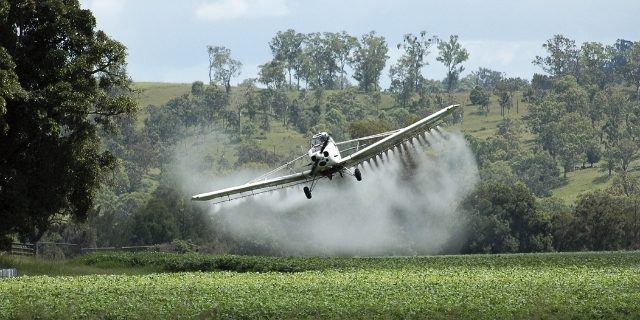04
Nov
After Court Rules Herbicide “Would Tear the Social Fabric of Farming Communities,” Dicamba in Genetically Engineered Crops Given Go-Ahead by EPA

(Beyond Pesticides, November 4, 2020) Despite a recent court ruling voiding the registration of drift-prone dicamba herbicides on genetically engineered (GE) cotton and soybeans, EPA has renewed the registration of these chemicals. The court’s ruling stated that EPA, “substantially understated risks that it acknowledged and failed entirely to acknowledge other risks,” in regards to the herbicides XtendiMax and Eugenia (dicamba), produced by agrichemical corporations Bayer and BASF for their genetically engineered (GE) crops. In announcing the decision, Administrator Andrew Wheeler said the agency made its decision “[a]fter reviewing substantial amounts of new information, conducting scientific assessments based on the best available science, and carefully considering input from stakeholders.” Yet, it is evident that the most important stakeholders for EPA continues to be chemical corporations.
The history of dicamba’s use in GE agriculture reveal this to be the case. In the mid-2010s, Bayer’s Monsanto developed new dicamba-tolerant seeds and received approval to sell them from the U.S. Department of Agriculture. EPA had not yet approved its corresponding herbicide, but nonetheless, Bayer’s Monsanto urged farmers to plant its seed, claiming they would increase yields. The results of this were predictable: farmers began to use older, unapproved dicamba formulations on their new GE seeds, and reports of drift damage began to spring up throughout the US. Dicamba has a strong propensity to drift off-site and can defoliate other crops at very low levels. Rather than take regulatory action to stop illegal use, EPA and USDA sat on their hands while the chemicals pitted farmer against farmer, neighbor against neighbor, in communities throughout the U.S.
In 2016, EPA approved agrichemical companies’ new “low volatility” dicamba herbicide formulations under a two year conditional registration. But by the end of 2017, according to court records and reporting from Reuters, state agriculture departments, primarily in the US Midwest, had been called for over 2,600 incident reports, and scientists indicated over 3.6 million acres of non-GE soybean crops had been damaged by dicamba drift – likely an underestimate according to EPA’s own staff.
EPA tried to tweak the label of the herbicide to lessen the impact, while Bayer persisted in blaming farmers for using older dicamba formulations. The agency let Bayer write it’s own rules on drift procedures, undermining the independent scientist who worked closely with the company at the last second. This led to the agency reapproving the highly drift-prone herbicide for another two year stint.
Advocates sued. The case worked its way through the courts, eventually resulting in a rare rebuke of EPA under the nation’s federal pesticide law, the Federal Insecticide Fungicide and Rodenticide Act (FIFRA). The written court ruling by the U.S. Ninth Circuit noted how EPA made its label language so difficult to understand as to make it “difficult if not impossible to follow for even conscientious users.” The agency also failed to consider the “anti-competitive economic effects” on non-GE markets – a knock against the agency’s propensity to favor chemical industry executives. And perhaps most egregiously, the judge ruled that EPA failed to account for how “dicamba use would tear the social fabric of farming communities.” The evidence was there, yet EPA sided with moneyed interests over the well-being of average Americans in farming communities.
Now, EPA is not only ignoring its statutory duties, but rejecting them and helping to perpetuate the chemical industry’s bad behavior. Its reapproved dicamba formulations come with i) new “important control measures” requiring a buffering agent (of questionably efficacy) be used; ii) a larger buffer (one roughly the size recommended by the independent scientists EPA allowed Bayer to overrule); iii) restrictions that prohibit use after July 30 (meaningless since that is roughly the end of the growing season) and; iv) an amorphous commitment to “simplifying the label and use directions” of dicamba products.
“EPA believes that these new analyses address the concerns expressed in regard to EPA’s 2018 dicamba registrations in the June 2020 U.S. Court of Appeals for the Ninth Circuit,” the agency’s press release states. Health and environmental advocates have already announced they will go back to court to challenge the decision.
Reworking EPA into an effective agency that lives up to its namesake will take time, effort, and significant involvement by all Americans. It is critically important to put pressure on elected officials hold government agencies accountable to the people, not the profits and compensation packages of agrichemical industry executives. Join Beyond Pesticides and help us fight for a more just regulatory system. For more information on the hazards of dicamba and GE agriculture, see Beyond Pesticides webpage.
All unattributed positions and opinions in this piece are those of Beyond Pesticides.
Source: EPA










